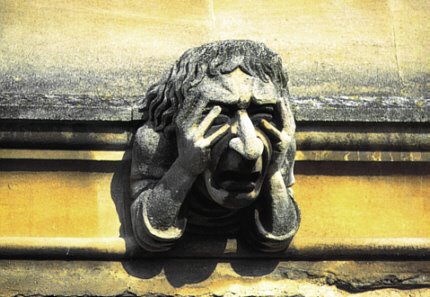Spectatorship and the Making of Early Modern Courtly Space
 Postgraduate conference at the University of Frankfurt/ Main (prospective date: 16 and 17 November 2012)
Postgraduate conference at the University of Frankfurt/ Main (prospective date: 16 and 17 November 2012)When Elizabeth I., in her famous address to Parliament in 1586, claimed that princes were set on stages for all the world to observe, she fashioned the court as a visual arrangement with the monarch at its centre. Courtly life in the early modern period takes place in a highly theatrical setting; it is about performance, self-display, and successful engagement of the monarch’s attention by making oneself into an object of visual interest. While courtly spectators monitored each other’s performance in a highly competitive world, Elizabeth’s gaze was fashioned, in many performances and poetic representations, as the formative agent both of the courtly self and of the social order as a whole. The burden of permanent observation, however, not only troubled courtiers and ladies but also the monarch, who was bound to fulfill the visual expectations of her subjects, to look the part, as it were. And while forms of courtly self-fashioning and monarchical self-representation changed after the death of Elizabeth, the focus on public display, both of courtly success and monarchical power also characterized the early Stuart courts.
In courtly entertainments, but also in diplomatic correspondence and foreign travel narratives, the court emerges as a complex visual field in which images of the monarch, visual relations between sovereign and courtiers and the spatial arrangements in which these exchanges take place interact with each other in the making of courtly subjectivity on the one hand and a regal aura of the monarch on the other.
In this conference we want to investigate practices (and their literary representations) which focus on visuality and the role of spectators and audiences, and which, in the process, generate and fashion courtly space, such as dancing, fencing and jousting, theatrical performance and spectacle, collections and fashions, progresses, masques and – with an eye at the prospective date of the conference – accession day festivities.
We invite contributions from all fields of early modern English culture with a marked focus on court activities. Please send a short abstract of c. 150 words and a short CV to s.scholz@em.uni-frankfurt.de and Tatjana.Trikic@googlemail.com. Although the conference is particularly directed towards postgraduates, we welcome scholars at all levels of their career. We can cover accommodation and travel costs within Europe for speakers but we encourage you to apply for funding if your own institution can provide travel grants.


0 Comments:
Post a Comment
<< Home